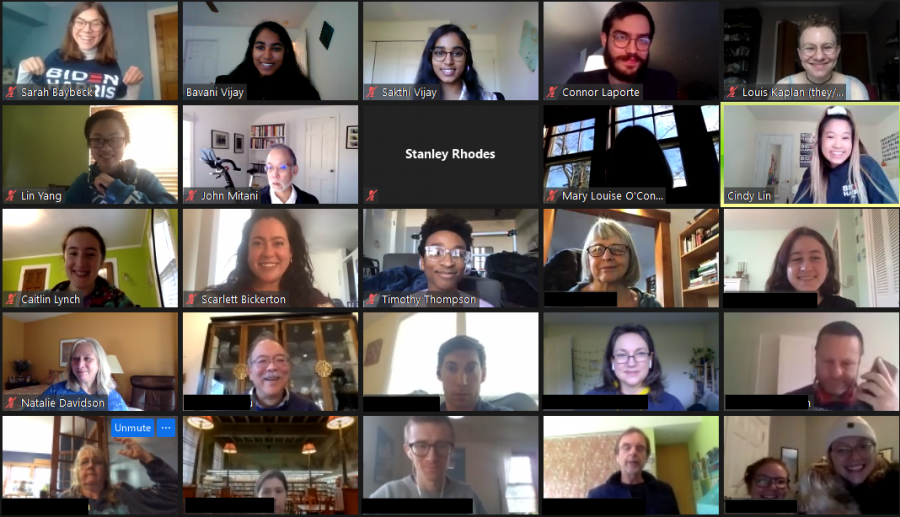High school students strive to impact the 2020 election
In a prominent and chaotic election, students involved in political campaigns and the election process faced a unique experience.
There are a variety of avenues through which students and young people became involved in the 2020 election; working at polling places, canvassing, phone banking, along with a variety of volunteer work and organization.
Senior Sarah Baybeck, the Co-president of Pioneer’s Young Democrats Club and a fellow for One Campaign for Michigan, an effort to get Democrats elected up and down the ballot, said there were many challenges this year due to COVID-19 restrictions.
“The climate of being a campaign staffer is definitely different. You don’t have that field office environment where you’re working with all your fellow organizers and staff,” she said. “But I would say that we used our virtual tools to the best of our ability to be able to still foster a strong culture within our campaign and with our volunteers, and I think that’s definitely part of the reason why we were able to create such a successful volunteer team in Ann Arbor.”
Despite the new struggles, young people remained involved in the process. Another fellow from One Campaign for Michigan, Sophomore Bavani Vijay, said that participation in politics is as crucial as ever.
“As young people who will, in the future, be in charge of running our country, it’s really important that we get involved now, because what happens now is going to set the stage for what’s going to happen later,” Vijay said. “Not being able to vote, this is the second best thing to influencing this election and influencing the policies that will go into place in January.”
This election did garner extra attention and activism from some organizations. Pioneer Senior Leela Grimsby, a member of the Sunrise Movement, said that her experience with the organization had dealt with smaller scaled activities, proving the national election to be challenging.
“We had never done anything that was to that magnitude, so we were working with a lot of our energy. It was definitely a lot more work,” Grimsby said.
Although youth engagement has certainly been high this year, Baybeck said there is still room for improvement.
“I would say there’s still not the level of involvement that I want to see from high schoolers, but I think it was really energizing the amount of my friends that I got involved, and the people that reached out to me that wanted to get involved,” she said.
Grimsby agreed that there could have been even more participation from high school students.
“I was one of the youngest people in the Zoom meetings. Most of them were college students, especially since their friends are all over 18 and already registered to vote, there wasn’t much of a role for younger people to play, other than organizing these text banks and phone banks,” she said. “It was really intimidating at times.”
This age disparity along with the large workload that can amount up to ten hours per week often dissuades potential volunteers.
“It was super challenging. This work challenged me in a way it hadn’t before. So it feels good to wake up without doubt and without regret, and knowing that I did what I could to take control of my future and our generation’s future,” Baybeck said. “It’s never too late to step into this work. It’s easy to be disillusioned and think that as a young person that you can’t vote, that there’s nothing you can do, that it’s out of your hands and wallow in pity and despair, but there’s a lot we can do to get the future we desperately want.”
Despite the difficulties, many student activists felt the experience was rewarding.
“It was so fulfilling, especially at the end when we had huge amounts of volunteers recruiting and getting them to sign up for more shifts,” Vijay said. “And in hearing the results, being happy about all the things we achieved was amazing.”


